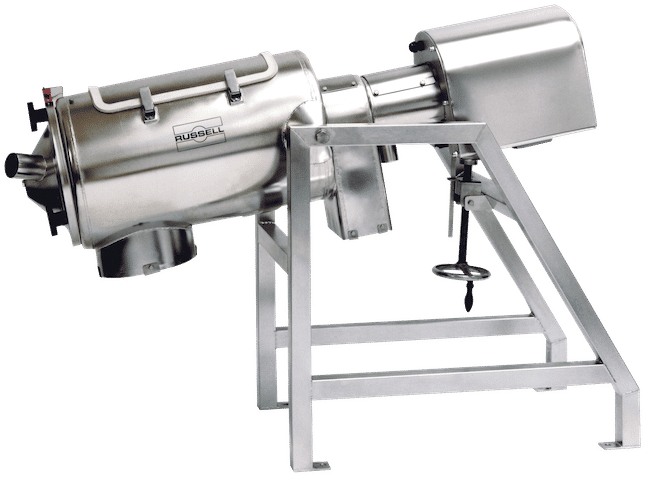Testing and Initial Setup Instructions For Russell Finex’s Liquid Solid Separator
TLDR/Overview
60% liquid to 40% solids ratio is usually optimal
Minimum flow is 10 gal./min.
Max pressure is 70 psi, max temp is 176°F
Screen should be set in water if not run for more than ~12 minutes
Excessive dry-running causes extra wear on the mesh
Steps & Notes
1. The LSS operates best with a 60% liquid to 40% solids ratio.
2. Pre-checks
(a) Can machine be operated throughout the range of its adjustable angle? (If machine cannot be fully angled then its ability to perform will be limited.)
(b) Is a pre-filter available to make sure large lumps will not enter centrifuge and damage mesh if this is a danger?
(c) Is a container available with a pump to take away product?
(d) Is a valve or variable speed pump available to control flow to the machine?
(e) Is water available — applicable if water purged bearing is going to be used.
Min flow of 10 galls/min is required.
(f) Is water available to back wash the mesh? Water is required at a flow rate of 40 gal./min. (180 liters/min) and at a pressure of 50 psi. This equates to a
pump producing 95 ft. head. Maximum pressure should be limited to 70 psi. Max temp should be limited to 176°F (80°C)
It should be noted that if either the flowrate or the pressure is not available then effective back-washing is not possible.
3. Ensure your correct meshes have been chosen. If comparatively low flow-rates are required, then it is better to use a mesh with a thicker wire strand to improve its strength. For example, it is possible to purchase a screen of 60 micron or 250# mesh with a wire thickness similar to that of 100 micron or 150# mesh. Although the open area will be lower, this may not significantly affect throughput but give much longer mesh life.
4. Spare meshes should be on-site. One damaged mesh, regardless of how the damage happened, could cause unnecessary delays. If a spare mesh frame is not available, then at minimum spare mesh sleeves should be kept.
5. When removing and fitting the dewatering centrifuge’s mesh frame, care should be taken to ensure the mesh does not catch on the impeller if the impeller has not been removed.
6. When running trials, the procedure as laid out in block diagram should be followed. It should be noted that gentler angles of the centrifuge will prolong the life of the mesh.
7. General Notes
(a) If applicable, it should be noted that the back-wash spray bars are not a CIP System. They are a back-wash system for:
(i) Preventing mesh blinding
(ii) To clean meshes between batches. If machine is equipped with spray bars, it is better to back-wash early to prevent meshes from becoming blind rather than trying to clean them once they are blind.
(b) When running products which is liable to dry off and skin, the mesh frame should be removed from the machine and soaked in water between batches when the time between batches exceeds 10-15 minutes.
(c) When running products which are liable to build up on the impeller, the impeller should be removed when taking out the mesh basket and washed to prevent build up. It should be noted that the shaft should not be separated from the coupling when doing this.
(d) The central seams on dewatering centrifuge’s sleeves should line up and the basket should be fitted into the machine with the seams pointing upwards. This will reduce the possibility of oversize particles catching on the seams and tearing the mesh. (e) The machine should not be operated for excessive periods without flow of liquid. The flow of liquid is used to move the oversize solids up the mesh and out of the oversize outlet. Excessive dry running with oversize solids in machine may abrade the mesh and reduce its life.
Have questions? Get in touch below.


